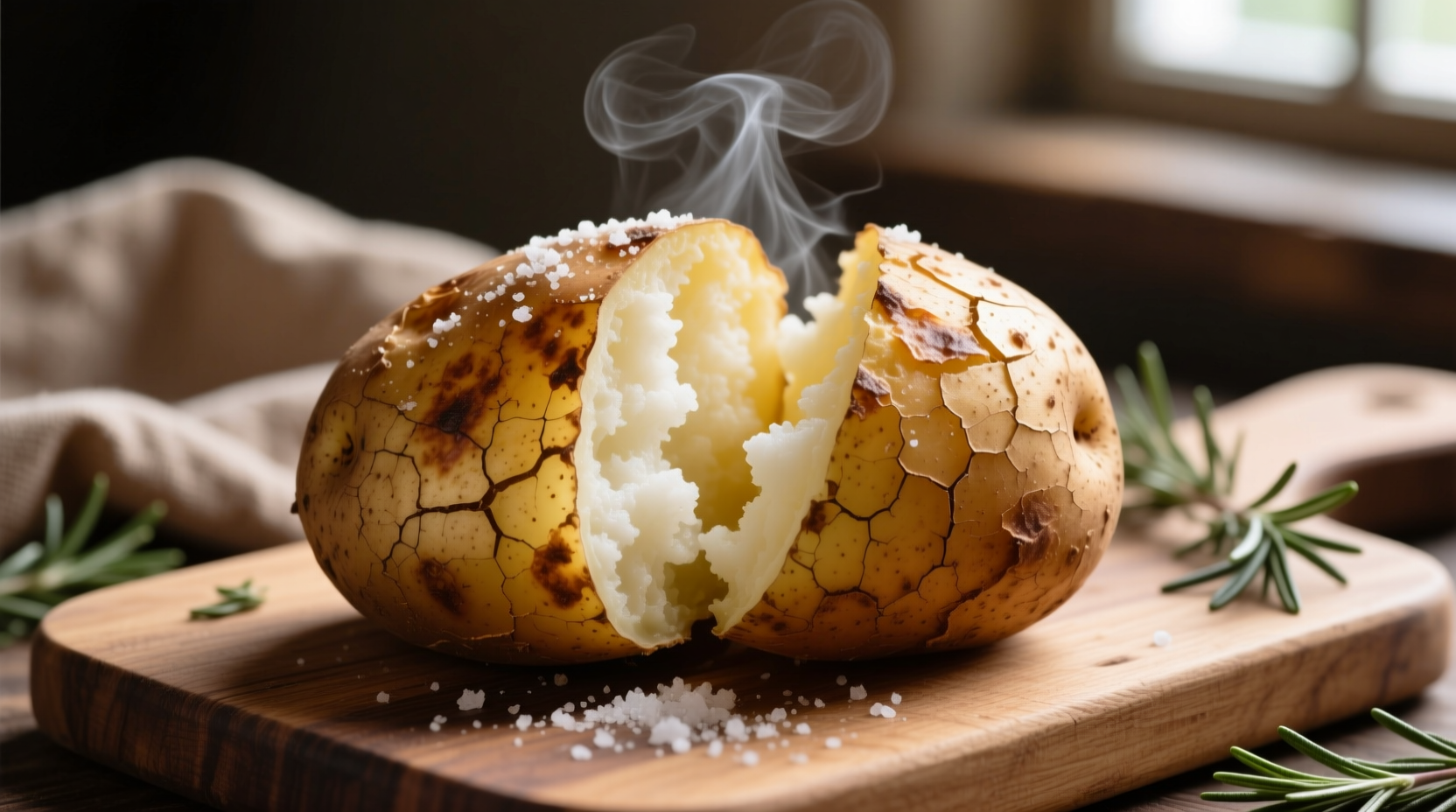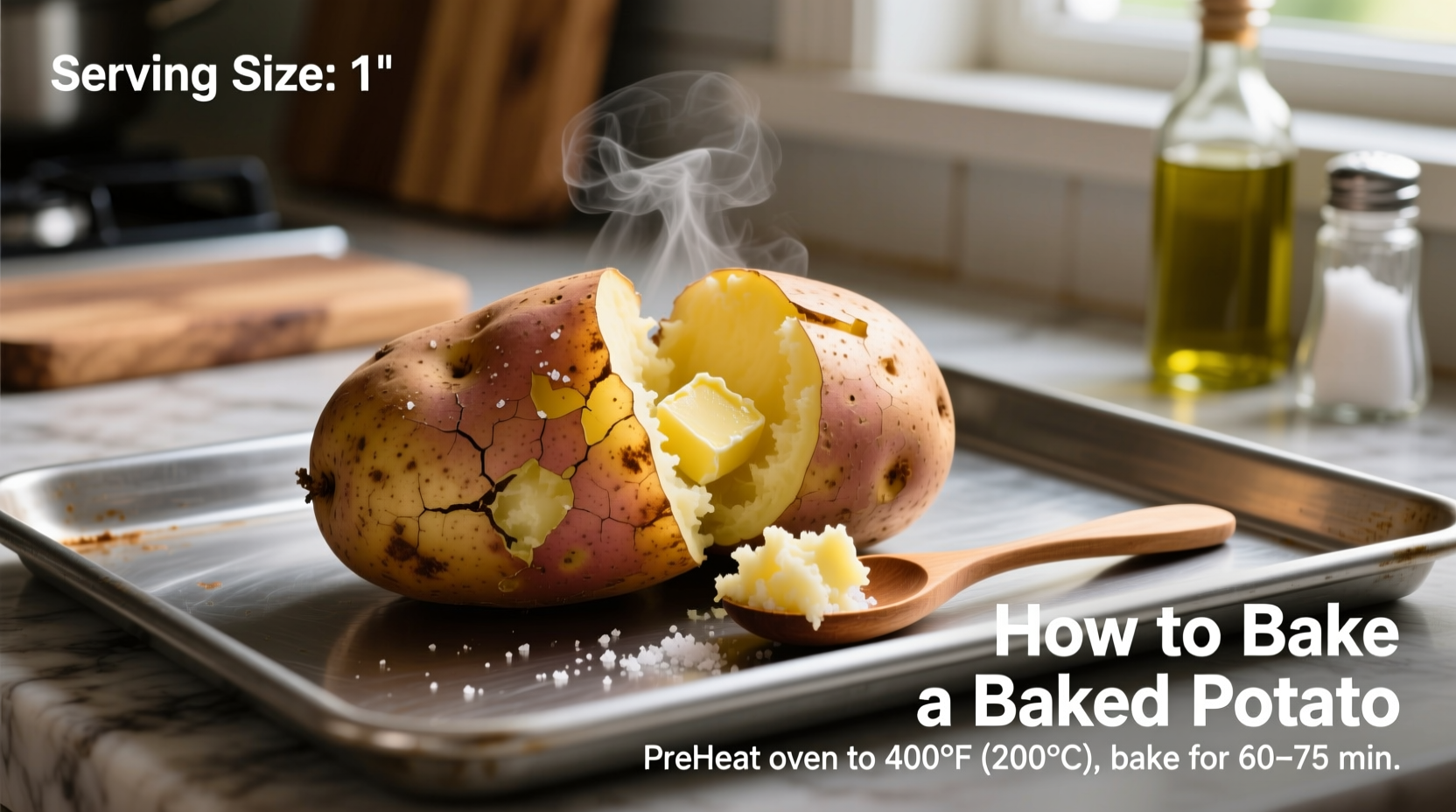The perfect baked potato requires russet potatoes, 400°F oven temperature, 45-60 minutes baking time, and proper preparation including thorough cleaning and poking holes. This method yields crispy skin and fluffy interior every time without foil.
Nothing beats a perfectly baked potato with its crispy skin and fluffy interior. As a culinary professional who's taught thousands of home cooks, I've perfected a foolproof method that delivers consistent results. In just 10 minutes of preparation and 45-60 minutes of baking, you'll have a restaurant-quality baked potato that serves as an excellent side dish or meal foundation. This guide reveals the exact techniques professional kitchens use, including why certain potato varieties work best and how to avoid common mistakes that lead to uneven cooking.
Selecting the Right Potatoes for Baking
Not all potatoes are created equal when it comes to baking. Russet potatoes (also called Idaho potatoes) are the gold standard for baking due to their high starch content and thick skin that becomes delightfully crispy. Their low moisture content transforms into that signature fluffy texture when baked properly.
| Potato Variety | Best For Baking? | Texture When Baked | Flavor Profile |
|---|---|---|---|
| Russet/Idaho | ✓ Excellent | Fluffy, light | Earthy, classic potato |
| Yukon Gold | ✓ Good (medium starch) | Creamy, slightly dense | Buttery, rich |
| Red Potatoes | ✗ Not recommended | Firm, waxy | Mild, subtle |
| Sweet Potatoes | ✓ Excellent (different method) | Creamy, moist | Sweet, caramelized |
According to USDA agricultural research, russets contain approximately 21-22% starch compared to 16-18% in Yukon Golds and only 14-16% in red potatoes. This higher starch content is crucial for achieving that desirable fluffy interior texture when baking.
Step-by-Step Baking Instructions
Preparation: 10 Minutes
- Clean thoroughly: Scrub potatoes under cold running water using a vegetable brush to remove all dirt. Russets grow underground and often have soil trapped in their skin grooves.
- Dry completely: Pat potatoes dry with paper towels. Moisture on the skin prevents crispiness.
- Poke strategically: Use a fork to pierce the potato 8-12 times around its surface. This allows steam to escape during baking, preventing potential explosions. Place holes about 1 inch apart.
- Optional oil rub: For extra-crispy skin, rub potatoes lightly with olive oil and sprinkle with coarse salt.
Baking Process: 45-60 Minutes
Place potatoes directly on the middle oven rack with a baking sheet on the lower rack to catch any drips. Bake at 400°F (204°C) for:
- Medium potatoes (6-8 oz): 45-50 minutes
- Large potatoes (8-12 oz): 50-55 minutes
- Extra-large potatoes (12+ oz): 55-60 minutes
| Time Elapsed | What's Happening Inside | What You Should Do |
|---|---|---|
| 0-15 minutes | Moisture evaporating from surface, skin beginning to crisp | Leave undisturbed |
| 15-30 minutes | Heat penetrating to center, starches beginning to gelatinize | Check for steam escaping from poke holes |
| 30-45 minutes | Starches fully gelatinizing, creating fluffy texture | Start checking for doneness at 30 minutes for small potatoes |
| 45-60 minutes | Complete transformation to fluffy interior, crispy skin | Perform final doneness tests |
Checking for Perfect Doneness
Don't rely solely on timing—potato size and oven variations affect cooking time. Use these three reliable methods to test for doneness:
- Squeeze test: Using oven mitts, gently squeeze the potato. It should give slightly under pressure but not feel mushy.
- Internal temperature: Insert an instant-read thermometer into the center. It should read 205-210°F (96-99°C).
- Fork test: A fork should slide easily into the center with no resistance.

Avoid These Common Baking Mistakes
Even experienced cooks make these critical errors that compromise results:
- Using foil: While common, wrapping potatoes in foil traps steam, resulting in boiled rather than baked texture. Save foil for keeping potatoes warm after baking.
- Skipping the poke holes: Without proper venting, steam builds up and can cause potatoes to explode in the oven.
- Incorrect oven temperature: Below 375°F won't create crispy skin; above 425°F risks burning the exterior before interior cooks.
- Not resting after baking: Allow potatoes to rest for 5 minutes after baking. This lets the interior finish cooking evenly through residual heat.
Professional Serving Techniques
How you cut and serve your baked potato dramatically affects the eating experience:
- Make a horizontal slit around the circumference about 1/4 inch deep
- Press opposite ends toward the center to open naturally
- Fluff the interior with a fork before adding toppings
- Season the interior with salt before adding butter (helps it melt evenly)
For classic toppings, combine softened butter, sour cream, and chives. For healthier options, try Greek yogurt with fresh herbs or a sprinkle of smoked paprika. Baked potatoes pair exceptionally well with grilled meats, roasted vegetables, or as the base for a loaded potato bowl.
Storage and Reheating Guidelines
Proper storage maintains quality and ensures food safety:
- Refrigerate leftovers within 2 hours of baking
- Store in airtight container for up to 5 days
- To reheat, place directly on oven rack at 350°F for 15-20 minutes (best method)
- Alternatively, microwave for 2-3 minutes, but this softens the crispy skin
The USDA Food Safety and Inspection Service recommends reheating cooked potatoes to an internal temperature of 165°F (74°C) to ensure food safety. Never leave baked potatoes at room temperature for extended periods, as this creates conditions where harmful bacteria can grow.











 浙公网安备
33010002000092号
浙公网安备
33010002000092号 浙B2-20120091-4
浙B2-20120091-4